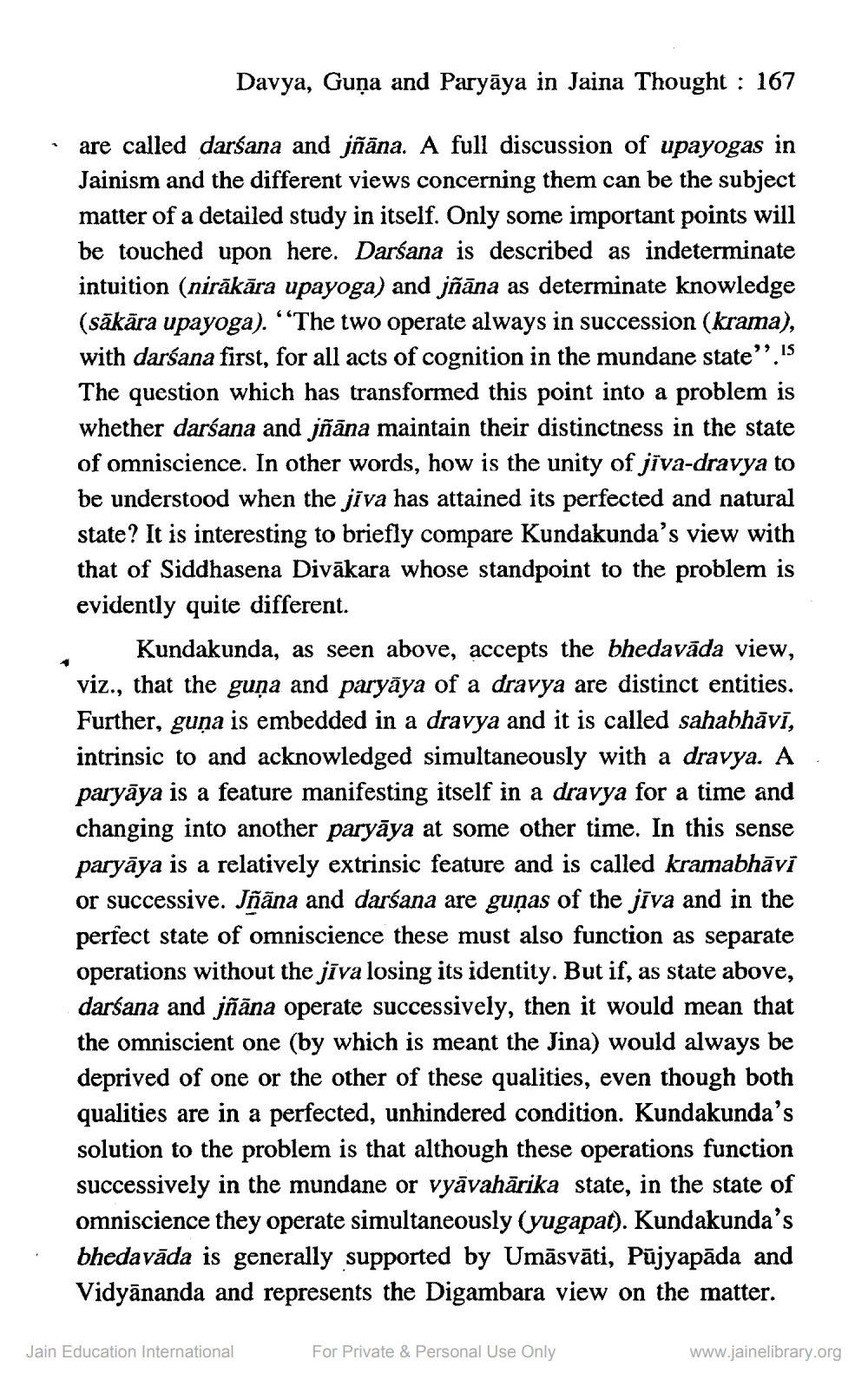________________
Davya, Guņa and Paryāya in Jaina Thought : 167
are called darśana and jñāna. A full discussion of upayogas in Jainism and the different views concerning them can be the subject matter of a detailed study in itself. Only some important points will be touched upon here. Darsana is described as indeterminate intuition (niräkāra upayoga) and jñāna as determinate knowledge (säkāra upayoga). “The two operate always in succession (krama), with darśana first, for all acts of cognition in the mundane state”.is The question which has transformed this point into a problem is whether darśana and jñāna maintain their distinctness in the state of omniscience. In other words, how is the unity of jiva-dravya to be understood when the jiva has attained its perfected and natural state? It is interesting to briefly compare Kundakunda's view with that of Siddhasena Divākara whose standpoint to the problem is evidently quite different.
Kundakunda, as seen above, accepts the bhedavāda view, viz., that the guna and paryāya of a dravya are distinct entities. Further, guņa is embedded in a dravya and it is called sahabhāvī, intrinsic to and acknowledged simultaneously with a dravya. A paryāya is a feature manifesting itself in a dravya for a time and changing into another paryāya at some other time. In this sense paryāya is a relatively extrinsic feature and is called kramabhāvi or successive. Jñāna and darśana are guņas of the jīva and in the perfect state of omniscience these must also function as separate operations without the jīva losing its identity. But if, as state above, darśana and jñāna operate successively, then it would mean that the omniscient one (by which is meant the Jina) would always be deprived of one or the other of these qualities, even though both qualities are in a perfected, unhindered condition. Kundakunda's solution to the problem is that although these operations function successively in the mundane or vyāvahārika state, in the state of omniscience they operate simultaneously (yugapat). Kundakunda's bhedavāda is generally supported by Umāsvāti, Pūjyapāda and Vidyānanda and represents the Digambara view on the matter.
Jain Education International
For Private & Personal Use Only
www.jainelibrary.org




